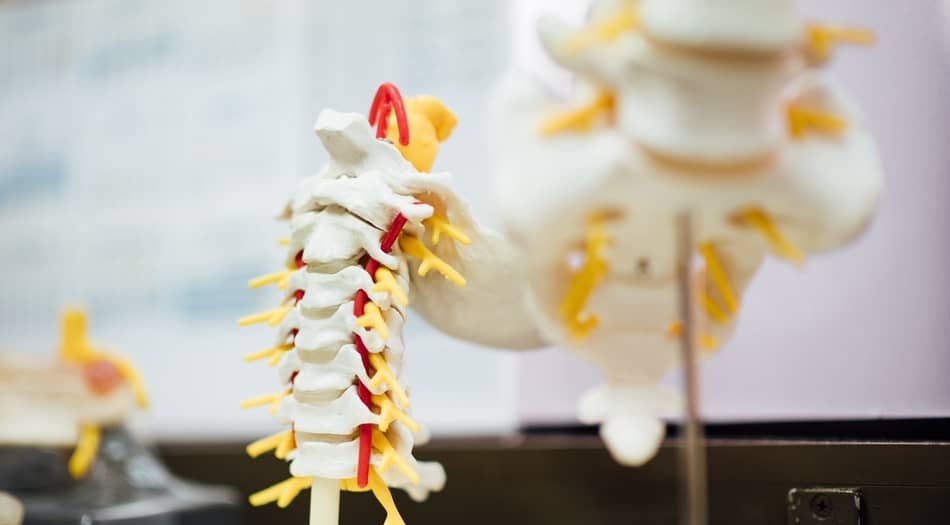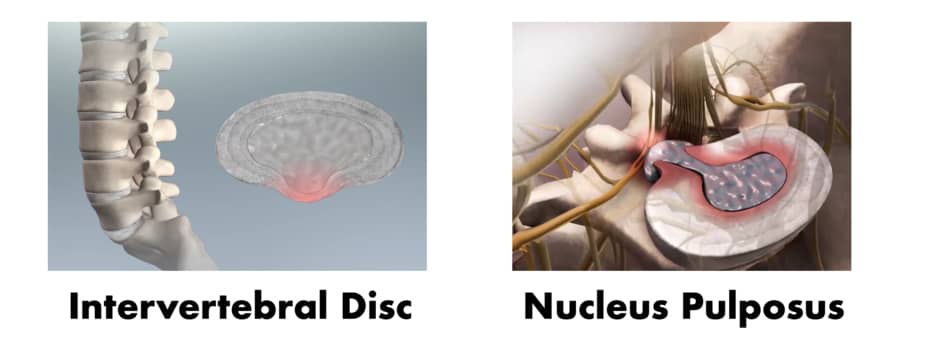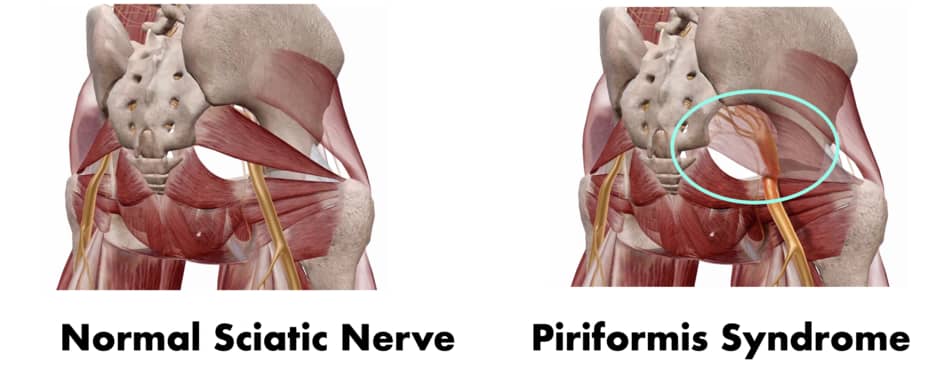One of my clients asked me about his sciatica problem and was concern if this gonna affect his peloton workout routine. In this article, I will explain different types of lower back pain and help you understand if peloton is good for sciatica?
As a whole, the peloton is good for sciatica because cycling at moderate intensity and training volume is one of the most recommended physical activities that help to decompress the lumbar spine and manage pain. However, it also depends on the causes of symptoms.
Please remember that sciatica is just a symptom that can originate from different problems. Keep reading to learn more about different causes and how does peloton bike affect them.

Peloton For Sciatica
In general, there are three most common causes of sciatica pain symptoms which include disc herniation, lumbar spinal stenosis, and piriformis syndrome. Depending on which problem you have, cycling is either gonna be recommended or inappropriate.
NOTE: Before we go any further, if you have sciatic pain I strongly recommend checking with your physical therapist and find out what is the reason for the symptoms. This gonna help to address the problem more effectively.
What is Sciatica?
In general, sciatica refers to the description of symptoms like radiating leg pain created by the inflammation of the sciatic nerve and its branches. The nerve starts at the lumbar spine and radiates down towards the foot.
There are several reasons for sciatic pain to occur.
- Spinal disc herniation
- Spinal stenosis
- Piriformis syndrome
This means you can experience the same pain symptoms from completely different conditions.
Keep in mind that mechanical pressure of the spine, compression, and herniated disc is the most common causes of sciatic pain. In fact, studies have shown that 90% of sciatica cases are caused by a herniated disc (Valat et al. 2010).
What is Disc Herniation?
As a whole, disc herniation occurs when the nucleus pulposus (the gelatinous tissue inside of the intervertebral disc) prolapses out of its normal central location between the fibrous ring.
This creates contact and mechanical pressure between nuclear material and the nerve root.
The picture on the left shows you the intervertebral disc and the picture on the right illustrates how this gelatinous tissue escapes from the fibrous ring and contact with the sciatic nerve.

The function of the intervertebral disc is to act like a hydrostatic structure that helps with shock absorption.
Think about the intervertebral disc like a doughnut with jelly in the middle (time for some embarrassing analogy). When you squeeze the doughnut, the dough is spongy enough to absorb the pressure.
However, the more pressure you apply, the bulging of the jelly will cause the dough to break and the jelly will find its way out.
The same with the nucleus pulposus.
The most common reasons for this gelatinous tissue to prolapse are:
- Age-related changes
- Lifestyle (smoking, sitting)
- Mechanical pressure (strenous physical activity, heavy lifting, vibration)
Does The Peloton Help with Herniated Disc?
In general, the peloton doesn’t help much with herniated disk because cycling requires lumbar flexion, which can aggravate the pain in the lower back. Repeated forward flexion for a prolonged period of time compresses the spine and increases the pressure on the herniated disc.
Please remember that with the herniated disc you want to avoid bending forward and rounding your back for long periods of time. This means long-distance cycling isn’t the most optimal way to train.
However, keep in mind that cycling is also a non-weight-bearing activity, which helps to reduce overall pressure on the spine, as long as your saddle is in the right position.
Can you ride a peloton with a herniated disc? Overall, you can ride a peloton with a herniated disc, as long as you stay in the saddle and set up the seat correctly to reduce lumbar flexion. The seat position helps not only to lower the pressure on the lower back but also prevent any problems from happening in the first place.
I always like to set up my seat around the hip bone level, with handlebars 2-3 inches higher than the seat. This helps to maintain a neutral spine position, reduces flexion, and prevents unnecessary compression (more on that later).
Another common reason for sciatica is lumbar spinal stenosis.
What is Lumbar Spinal Stenosis?
As a whole, lumbar spinal stenosis is a condition that refers to a narrowing of the spinal canal due to age-related changes in spinal joints and intervertebral discs. The loss of height and cushion leads to narrowing the spinal frame and nerve root space.
Below you can see the difference between normal spine disc and spinal stenosis.

As you can see, on the left side you have perfectly hydrated tall and plump discs that provide support and absorb the shock.
On the right side, you have a stiff, dehydrated, and flat cushion that narrow vertebrae frame, which presses on the sciatic nerve.
The most common symptom of lumbar spinal stenosis is lower back pain and it is mostly aggregated by standing, walking, or anything that requires a lumbar extension (which is the opposite to previously discussed herniated disc).
Studies have shown that forward flexion, sitting, or recumbency relieves the pain from spinal stenosis (Lurie 2016).
Not only that.
Recent research done by Dr. Charlotte Pauwels documented that cycling, as a lumbar-flexion-based endurance training, is an effective way to reduce pain, improve spine function, and overall quality of life in people with chronic lumbar spinal stenosis (Pauwels et al. 2018).
Does The Peloton Help with Spinal Stenosis?
As a whole, the peloton does help with lumbar spinal stenosis because it’s a well-tolerated endurance training that doesn’t require a lumbar extension. Exercises with lumbar flexion help to decompress the spine and open the lumbar canal.
People who struggle with spinal stenosis will complain about pain during standing, walking straight, or downhill. As a result, they tend to lean forward because that helps to alleviate the pain.
This is often called the “shopping cart sign”. People lean forward on the shopping cart because this helps to reduce pain.
Riding on the peloton bike requires mild lumbar flexion, which not only helps to reduce the pain from spinal stenosis but also allows to train consistently.
NOTE: The spinal disc herniation and lumbar spinal stenosis can have the same sciatic nerve pain symptoms, but the exercise recommendation is vastly different.
Another reason why people may have sciatica symptoms is Piriformis syndrome.
What is Piriformis Syndrome?
As a whole, piriformis syndrome is a neuromuscular disorder that is caused by spasm, contraction, hypertrophy, or swelling of the piriformis muscle, which compresses the sciatic nerve.
The sciatic nerve can be either embedded in the belly of the muscle, or in between two heads of the muscle.
In other words, sciatica caused by the piriformis syndrome doesn’t originate from the spine but muscle compression. Again, the same symptoms but the different causes.
Below you can see the difference between the normal sciatic nerve (on the left) and the compressed piriformis (on the right).

As you can see, on the right side the piriformis muscle pinches the sciatic nerve. That compression causes radiating pain from the lower back all the way down to the leg.
Does The Peloton Help with Piriformis Syndrome?
As a whole, the peloton does help with piriformis syndrome, as long as it’s done with low intensity and low training volume.
Studies have shown that the sciatic pain that results from piriformis syndrome is favored by traumatic and positional factors along with muscle overtraining.
This means you need to ensure that your seat and handlebar position is set in a way that doesn’t aggravate the problem, and that you don’t overtrain.
But that’s not all.
A fascinating case study done by Dr. Jason C Tonley that was published in the Journal of Orthopaedic & Sports Physical Therapy documented a 30-year-old male who suffered from piriformis syndrome for 2 years.
A closer mobility and movement analysis revealed the weakness of the right hip abductor and external rotator muscles.
This imbalance in the length-tension relationship of the right hip abductor and external rotator contributed to the pain symptoms.
The results after 3 months showed that simple single-leg hip-strengthening exercises and correct movement reeducation were enough to reduce pain to 0/10 on the RPE scale.
The bottom line is that each case is different. Getting a movement screening and professional analysis can help to find the problem and relieve the pain more effectively, compared to traditional stretching and/or soft tissue massage.
Can Peloton Cause Sciatica?
As a whole, the peloton bike is unlikely to cause sciatica problems, as long as you have your bike set up correctly. However, strenuous and prolonged flexion of the lumbar spine, combined with prolonged sitting during the day can aggregate the pain.
Having a sedentary lifestyle is more likely to cause the problem. In fact, studies have shown that prolonged sitting can lead to increased low back pain (Hartvigsen et al. 2000).
That’s why I like the peloton app because apart from the spin classes you also have a whole library of sessions to choose from that can help to combat postural adaptations caused by sitting.
My favorite class that can help to reduce sciatica symptoms and lower back pain is yoga anywhere. This class is all about mobility on the go, whenever you’re in your office, shopping mall, or on the bus.
Learn more: To read more about how peloton yoga can help your sciatica problems check out my article “peloton yoga” for strength and recovery.
How To Adjust Peloton For Sciatica
Now let’s look at how exactly you should set up your Peloton bike to reduce lumbar flexion and manage sciatic pain better.
Of course, regardless if you have sciatica or not, your seat and handlebar should be positioned correctly anyway.
| Position | Description |
|---|---|
| Seat height | Your seat height should be around your hip bone. This allows keeping your knee extended up to 20 degrees during revolutions. |
| Seat distance | The distance between your seat and handlebar should be your arm’s length (elbow to fingers). If the handlebar is too close, it will cause lumbar extension. If the handlebar is too far, it will cause lumbar flexion. |
Here is the video tutorial from Dr. Vince on how to set up your peloton seat correctly.
Conclusion
As you can see, sciatic pain is very broad and can be triggered by different things. Knowing exactly what are the causes immediately increases your chances for success.
This means that before you try anything on your own, make sure to consult with your PT and work together on the exercise program.
